Are you preparing to purchase new lifting slings for an upcoming overhead lift? Did a recent inspection of your rigging gear reveal your slings are no longer in compliance with the standards set forth by the American Society of Mechanical Engineers (ASME)? Do you expect your lifting slings to be durable, made with high quality materials, and easy for your rigging team to work with?
If you answered yes to any of these questions, Slingmax® High Performance Fiber Twin-Path® Synthetic Slings may be an appealing option.
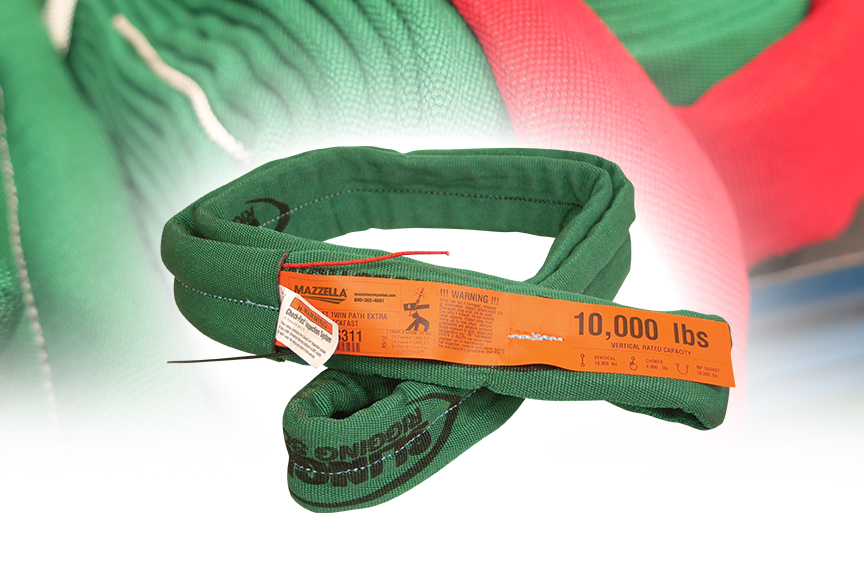
While you may be interested in Slingmax® Twin-Path® slings, there may be some confusion with how to order the right replacement slings so you and your company can continue executing safe and efficient lifts.
Having been in the rigging business since 1954, Mazzella has the experience to help clear up that confusion. This article is one in a series of content designed to show you how to order the correct slings for your lifting applications.
In this article, you’ll learn the answers to the following questions:
- What are the types of Twin-Path® sling configurations?
- How do you measure Twin-Path® sling length?
- What do you need to know before ordering Twin-Path® slings?
- What are the questions you should be prepared to answer when ordering a Twin-Path® sling?
- What questions should you ask before ordering a Twin-Path® sling?
- What environments will a Twin-Path® sling work in?
- What protection is recommended for Twin-Path® slings?
What Are the Types of Twin-Path® Sling Configurations?
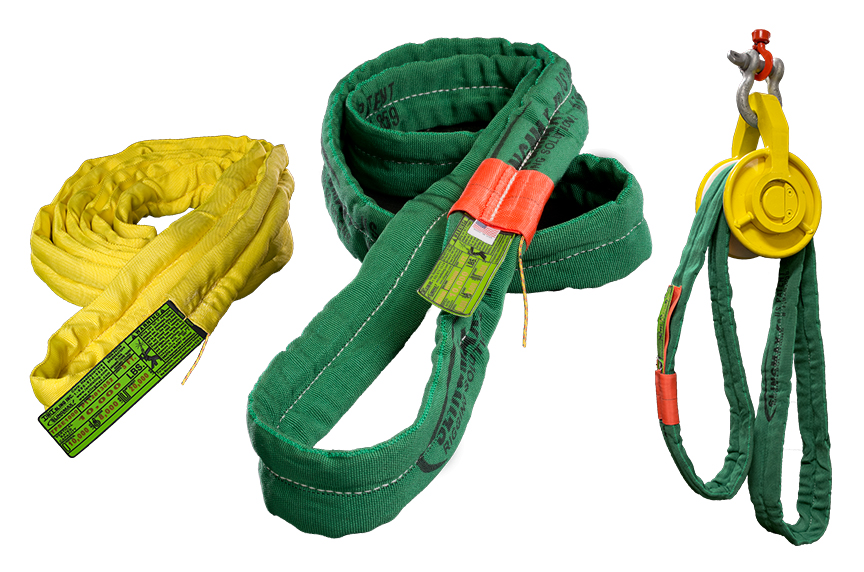
Most Twin-Path slings are ordered in a standard endless roundsling configuration, however there are many different ways to modify a Twin-Path® sling to ensure it is the perfect fit for your application.
An eye-and-eye sling is one of the more common modified configurations, and requires a sleeve to be put over the body, or the middle, of the sling. That sleeve creates an eye on both ends. This configuration is fairly common, and typically, used in situations where customers want to ensure the sling is used in a specific way over and over again. Slings can be tapered approximately one half their nominal body width to reduce the sling’s footprint and fit in certain hardware or lifting points.
Multi-leg bridles are available with Twin-Path® slings. Twin-Path® slings can be fabricated on a type of hardware or ring to create a multi-leg bridal. Also, Slingmax® offers “The TPA,” which is the Twin-Path® Adjustable Bridle. This is used to balance uneven loads so you can lift them appropriately.
Also, Slingmax® offers a high temperature version of the Twin-Path® sling, known as “The Sparkeater®.” That version of the Twin-Path® sling is suitable to be used in environments up to 300°F, while a standard Twin-Path® sling should only be used in environments at 180°F or less.
Twin-Path® slings are highly customizable. There have been many kinds of slings fabricated to unique specifications to solve a customer’s problem.
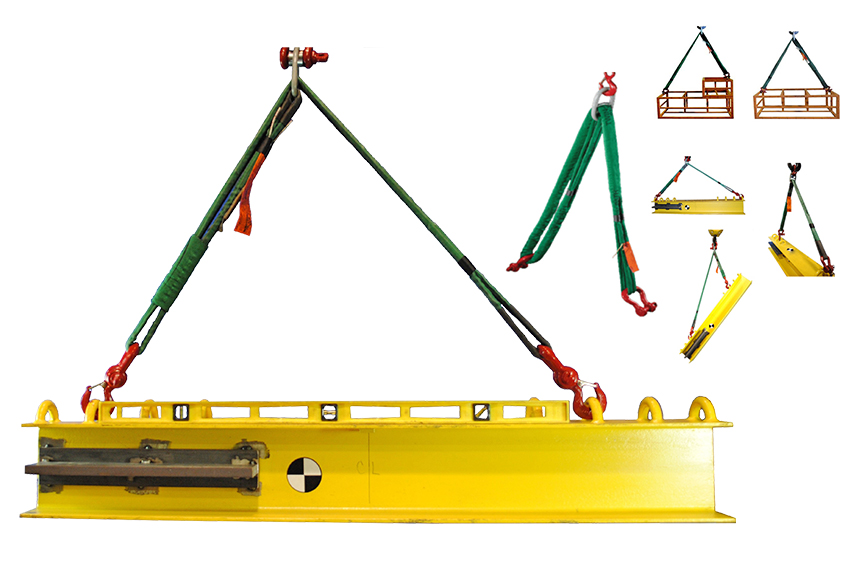
Example: Slingmax® has sewn a Cornermax® sleeve directly into a sling jacket to eliminate any potential movement or sliding that might happen with that sleeve. Also, Slingmax® has seen rubber attached to a sling so it can better grip the load in certain lifting applications.
Opposite of tapering a Twin-Path® sling, which reduces the sling footprint to fit through smaller width lifting points, Slingmax® actually can spread the fiber out wider than the standard width. If an end-user wanted to take a Twin-Path® to a Quad-Path, that spreads out that load’s impact during certain lifting applications.
In short, ordering a Twin-Path® sling can be as simple as browsing the Slingmax® catalog and placing an order with the dealer. However, it can be more in-depth where special considerations need to be made, or some kind of customization would be the best solution for the customer.
How Do You Measure a Twin-Path® Sling?
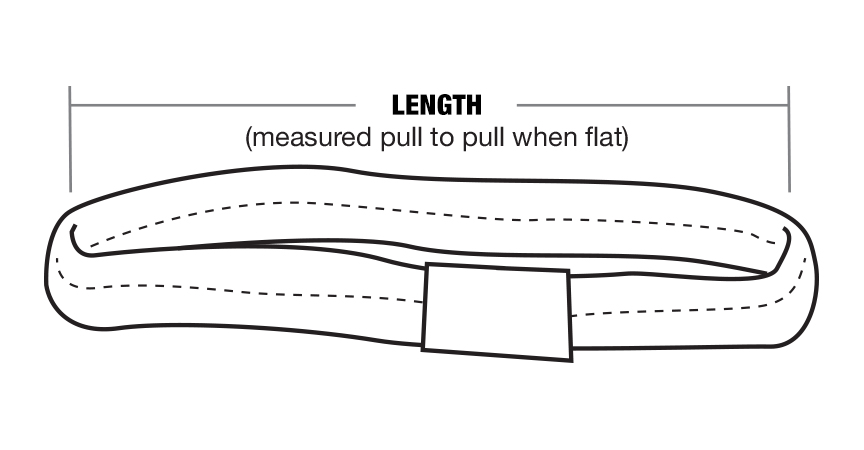
Like with other synthetic slings, with Slingmax®’s Twin-Path® slings, the recommendation is to measure from bearing point to bearing point. However, Slingmax® adds the recommendation that the sling be measured under load.
This measuring could take place with as little as 10% rated capacity. Although the core yarn stretches less than 1% of its original size, the outside jacket actually can expand and contract. If you’re dealing with slings that have been used in the field, we recommend measuring them under a slight load to get an accurate length measurement.
If that’s not possible, you can bring your Twin-Path® slings to a manufacturer, where they can put it on their test bed and apply tension to get an accurate measurement.
What Do You Need To Know Before Ordering a Twin-Path® Sling?
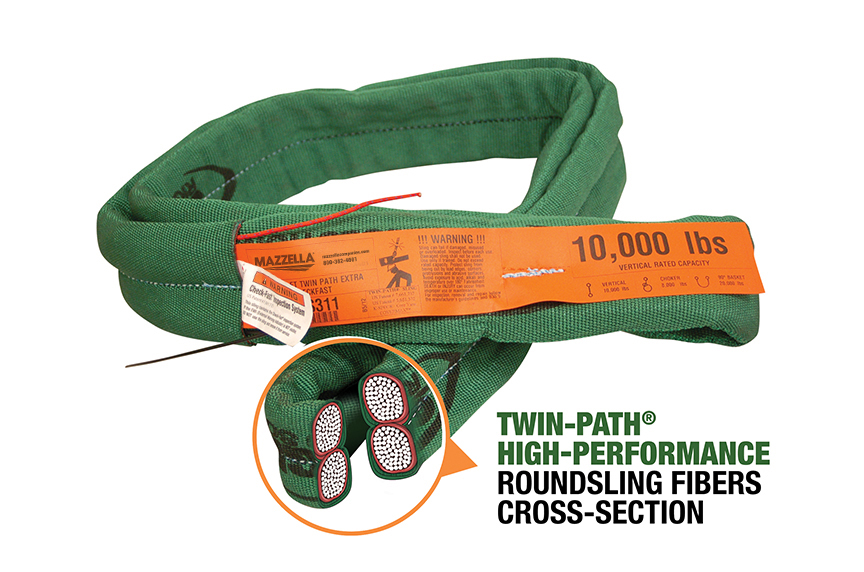
It is important for you to know that Slingmax® Twin-Path® slings are not commodity slings. They are high-quality lifting slings that if maintained, can be used over a period of years over many different jobs. They are not designed to be used just a few times, only to be disposed of, and replaced on a regular basis.
You should be aware that inside of every Twin-Path® sling is a blend of different high-performance fibers. This blend is called K-Spec® core yarn, and its proprietary to Slingmax® products.
The benefits of using a blended fiber over just a straight single-fiber HMPE is that every fiber has strengths and weaknesses. By using a blend, the strengths of one fiber can counteract any negative attributes of a different fiber. For example, slings made with 100% HMPE are subject to creep, which is the elongation of fibers over time. A Twin-Path® sling does not because it’s a blend of multiple fibers.
You should also know that all of Slingmax®’s Twin-Path® slings are fabricated with the Check-Fast® inspection system. This is an overload device that has proven useful in alerting the end-user when a sling is overloaded before or during, the execution of a lift.
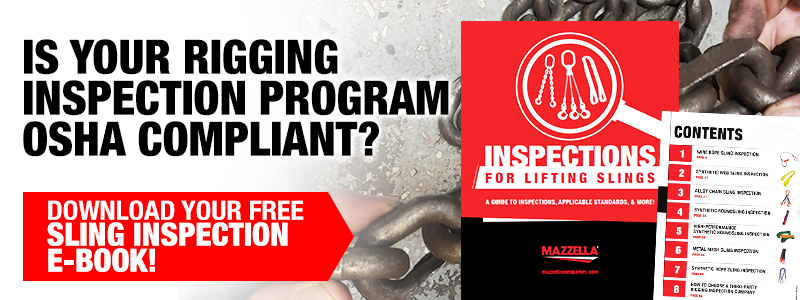
What Questions Should You Be Prepared to Answer When Ordering Twin-Path® Slings?
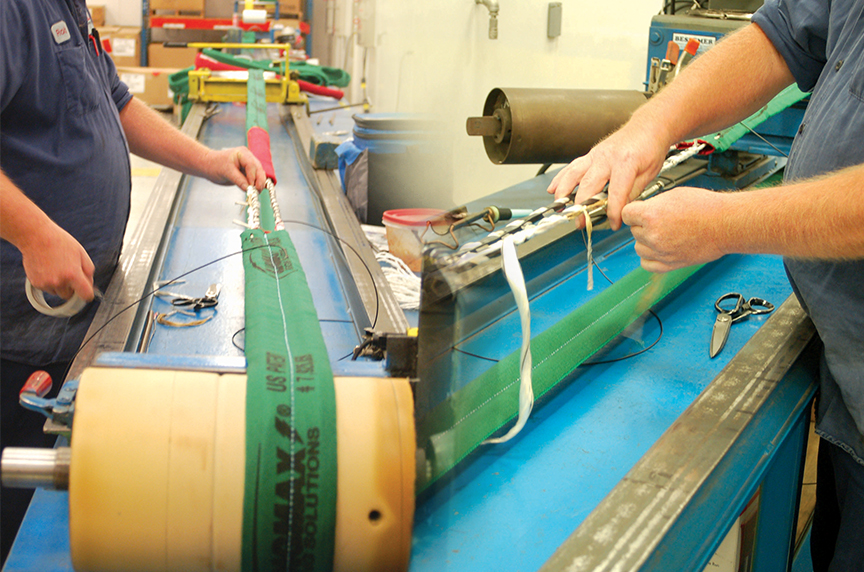
It is important to note that Twin-Path® high-performance slings are not an off-the-shelf product. Every Twin-Path® sling is made to order to meet your exact specifications. That’s why it is important to know the details of your lifting applications.
Here are the questions you should be prepared to answer before ordering a Twin-Path® sling:
- What are you lifting?
- What is the weight of that object?
- Are there lifting points that are involved?
- What specific types of hardware do you use to attach to those lifting points?
- Will the Twin-Path® sling be used on an abrasive surface?
- Are there any edges or risk of cutting in your lifting applications?
Asking these questions will help determine the correct length and capacity Twin-Path® sling, as well as any modifications that need to be made on that Twin-Path® sling.
What Questions Do Customers Typically Have Before Ordering Twin-Path® Slings?
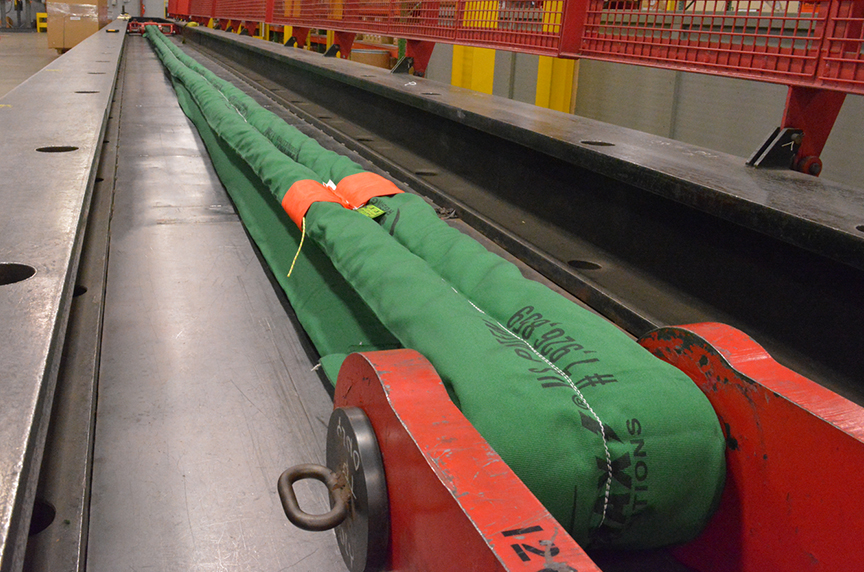
Are Twin-Path® Slings Proof Tested?
The answer is yes. Slingmax® fabrication procedures specify that every Twin-Path® sling is proof tested to two times its working load limit before it leaves the factory.
Can Twin-Path® Slings Be Repaired?
Again, the answer is yes. Twin-Path® slings can be repaired. The Check-Fast® system can be reset if it is engaged or subjected to overload, and the outer jacket can be patched.
The only thing that cannot be repaired on a Twin-Path® sling is the core fiber itself. Once that’s damaged, the Twin-Path® sling must be pulled from service and discarded. Damaged core fibers are cause for removal from service, per ASME. Other than the core fiber, everything else is repairable.
What Is a Twin-Path® Sling’s Length Limitations?
“How short can you make them?” or “How long can you make them?”
The shortest Twin-Path® sling is 3’ in length because that’s the shortest length that the Check-Fast® system can work in. Conversely, the longest Twin-Path® sling length is around 100’. However, that’s subjective to the specific dealer. Most dealers have the ability to produce 100’ Twin-Path® slings, and some can actually go longer than 100’ if needed.
What Is a Twin-Path® Sling’s Capacity Range?
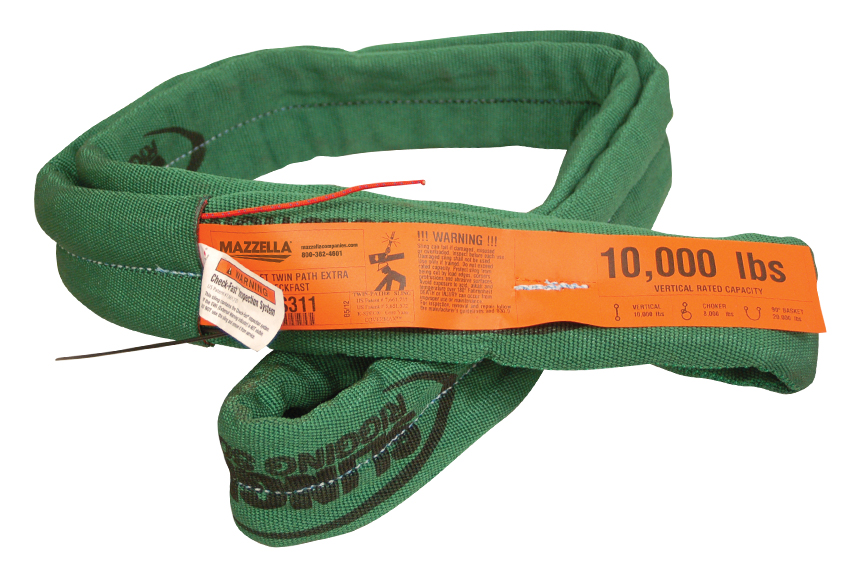
The smallest capacity of a Twin-Path® sling is 10,000 lbs., and the largest catalog capacity is 600,000 lbs. (300 tons). Slingmax® can manufacture slings to much higher capacities if required. Lifts requiring capacities larger than 600,000 lbs. typically require a Tri-Path sling design, which features three paths instead of two.
What Are the Length Tolerances When Ordering Multiple Twin-Path® Slings?
Often customers need to order multiple Twin-Path® slings in sets of matching lengths. It is very important that these slings are as close to exact matching length as possible to ensure a balanced lift when used in the field.
Slingmax® dealers have the capability to fabricate multiple Twin-Path® Slings to be within plus or minus 1” of each other. This is a very important factor when deciding which slings are best suited for your lifting application.
What Is the Lead Time For Ordering a Twin-Path® Sling?
End-users may think because it’s a custom made-to-order product, there is going to be a long lead time. However, with the machinery that all Slingmax® dealers have, along with full inventories of K-spec® Core Yarn and Covermax® Covers, the lead times are actually short.
Slingmax® has experienced situations where an emergency rush scenario comes up, and a customer needs new Twin-Path® slings immediately. Depending on the dealer’s backlog, Twin-Path® slings can be fabricated, proof tested, and delivered to the customer within 24 hours. All of Slingmax®’s dealers are stocked with material to make slings quickly.
What Environments Are Best for Twin-Path® Slings?

Due to their endless configuration, there may be some confusion about how Slingmax® Twin-Path® slings are used in rigging. It’s easy enough to figure out a vertical hitch in a straight-line pull, but can it be used in other hitches like basket and choker?
Twin-Path® slings can be used in vertical, basket, choker, double-wrap hitches, and used as part of multi-leg assemblies. Twin-Path® slings are commonly used in conjunction with below-the-hook lifting devices on specialized lifts.
Common applications of Twin-Path® slings include:
- Construction
- Power industry (power generation and power distribution)
- Wind industry
- Offshore oil and gas
- Manufacturing and general industry (die lifts and other lifts that are repetitive by nature)
At Mazzella, we’ve even helped customers solve unique problems with Twin-Path® products. One oil and gas customer used Twin-Path® slings as blowout preventers in the oilfield. One steel customer used Sparkeater® Twin-Path® slings as a lightweight replacement for combination chain and large-diameter wire rope slings they were using in an electric arc furnace.
What Kind of Protection Works Well For Twin-Path® Slings?
Cut Protection
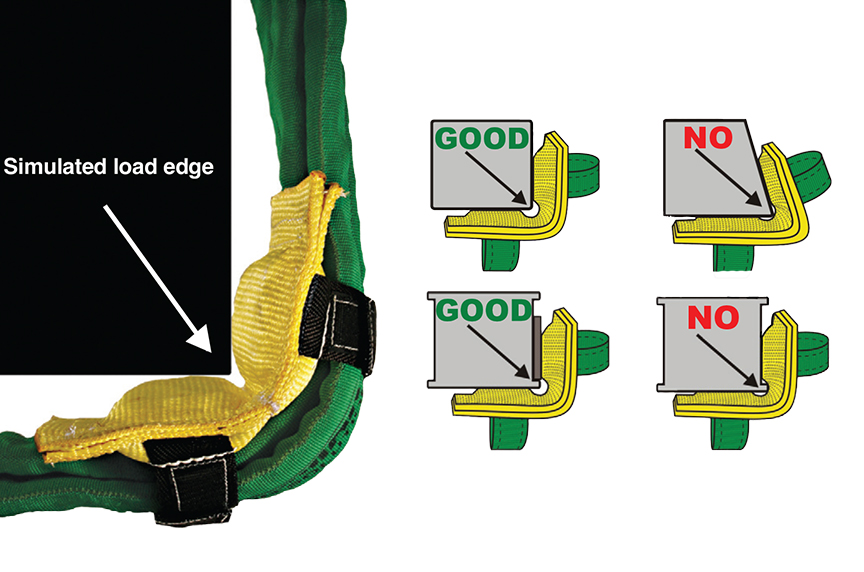
Slingmax® offers additional cut protection and abrasion protection solutions designed to work in conjunction with the Twin-Path® slings.
Slingmax® offers three types of engineered edge and cut protection made from high-performance synthetic materials. You should always protect your Twin-Path® slings from abrasion and cuts that could occur when the slings make contact with any edge of a load.
Slingmax® engineered Cornermax® products to provide 25,000 lbs. of cut protection per inch of sling width. Sling protection should always be used when lifting steel beams, concrete, and any other objects with an edge that could cause abrasion or cut an unprotected sling.
Cornermax® Pad — this pad is designed to be used on 90° angles and creates a “tunnel” of cut protection, known as the “No Touch Zone” so that the corner of the load does not come in direct contact with the pad or the sling.
Cornermax® Sleeve — this sleeve is made from durable high-performance fiber and can be permanently or temporarily attached to the sling with Velcro. The sleeve wraps around the sling itself, and then, is put in position to protect it from any type of edge.
Abrasion Protection
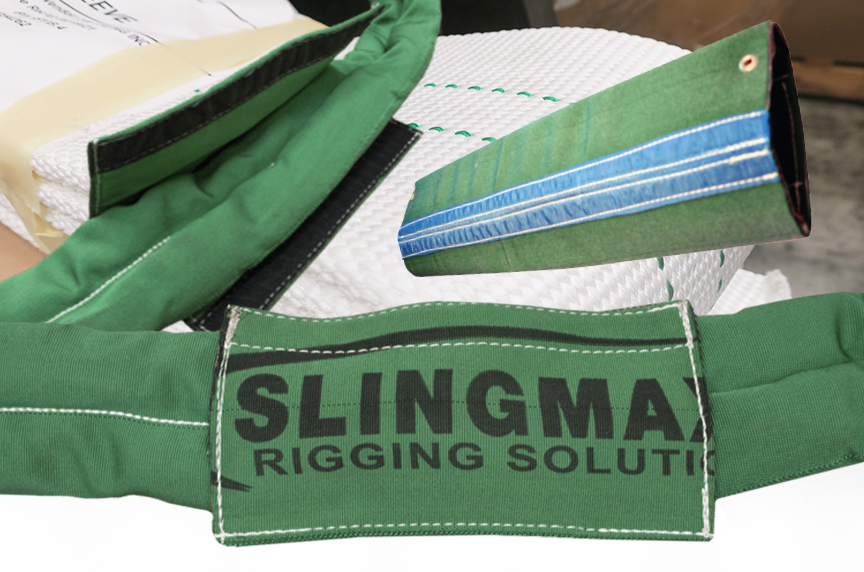
Synthetic Armor™ Pads protect slings from abrasion damage that can be caused by contact with rough surfaces such as concrete beams and structures. Also, they are used to protect finished or painted loads from marring. These pads can be made to fit any length or width sling. They can be fabricated in long lengths that the customer can cut into suitable sizes on the job.
Double or triple thickness provides resistance for more severe conditions. A variety of materials are used to protect slings and loads depending on the degree of abrasion expected in the application.
This pad is not rated to protect Twin-Path® slings from cutting on load edges, corners or protrusions. This pad WILL NOT adequately prevent damage or failure of a Twin-Path® sling if used for cut protection. Only pads which are tested and rated for cut protection are to be used to protect Twin-Path® slings from cutting. Using the incorrect form of sling protection could lead to serious injury and / or death.
Are Twin-Path® Slings the Right Solution For You?
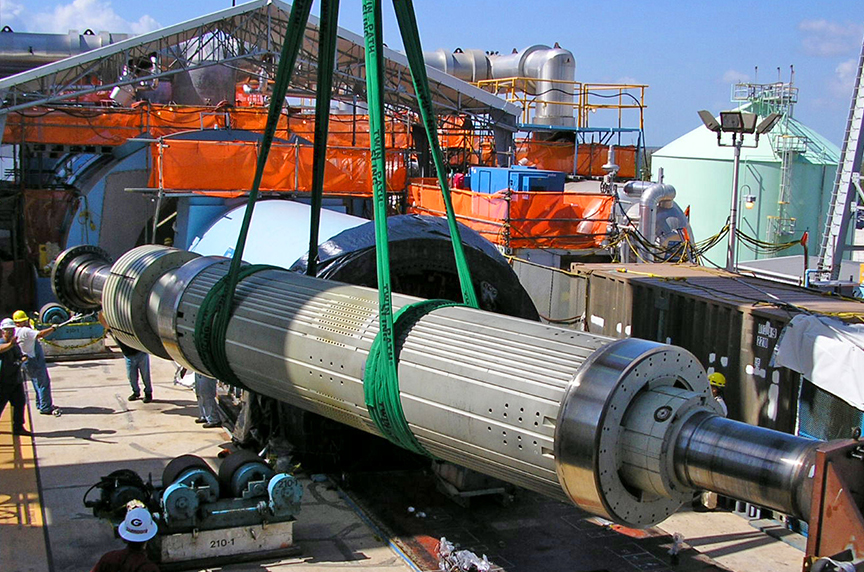
If you want to switch from heavy wire rope or alloy steel chain slings to a Slingmax® Twin-Path® sling, or you’re replacing a sling that’s been damaged or failed inspection, here’s what you’ll need to know to order the correct style sling for your lifting application:
- Working Load Limit
- Number of legs (single or multi-leg assemblies)
- Sling configuration (eye and eye style or fittings on each end)
- Sling length
- Additional cut, wear, or abrasion resistance
Mazzella offers resources in The Learning Center to help you learn about different types of slings, including:
- Roundslings
- Wire rope slings
- Flat web slings
- HMPE synthetic rope slings
At Mazzella, we provide ideal lifting solutions — offering all styles of lifting slings, rigging hardware, wire rope, overhead cranes and hoists, and engineered lifting devices. We have more than 30 locations across the United States — fully stocked with different sizes and configurations of rigging products for your next project.
Call us at 800.362.4601 or click here to contact a lifting specialist to learn more about or purchase new slings.
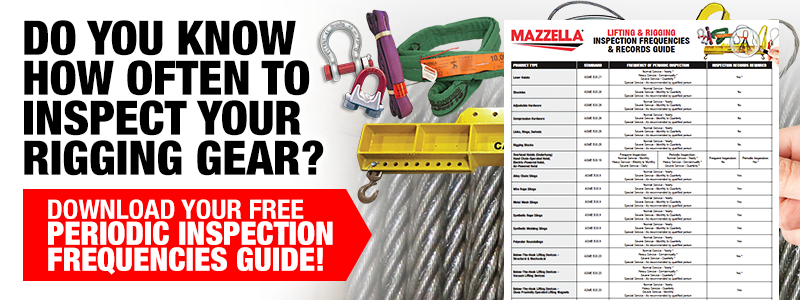

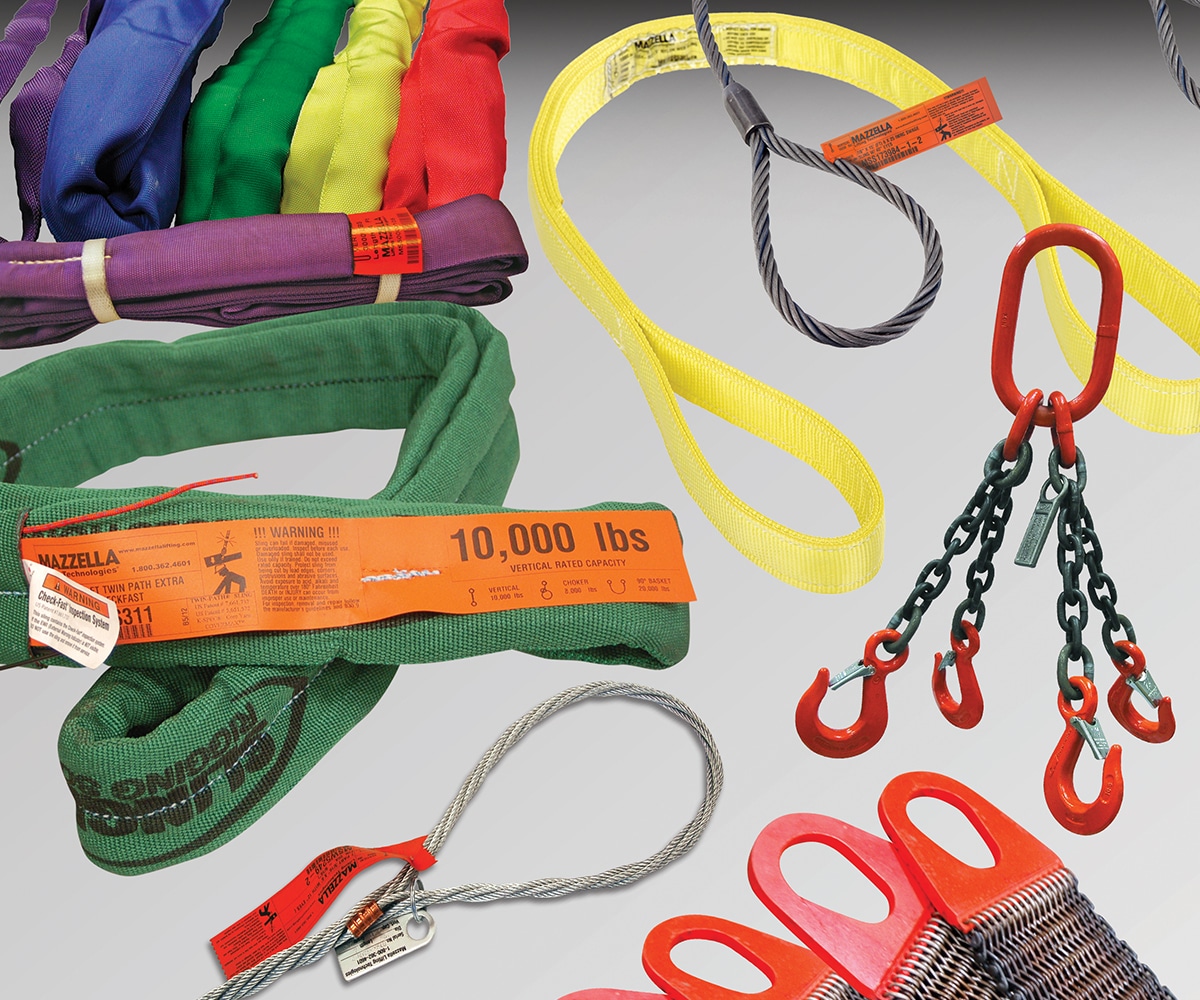
Slings & Assemblies
Are you looking for lifting slings, including chain, wire rope, synthetic flat web, metal mesh, cordage, and single-path / high-performance roundslings? We can help provide the right sling for your needs!
Additionally, if you need sling assemblies—both large and small, we can manufacture bridge cables, crane cables, steel mill cables, and thousands of OEM assemblies.
Contact us today to get the lifting slings and assemblies you need!
Learn more about lifting slings and assemblies!
Copyright 2021. Mazzella Companies.
